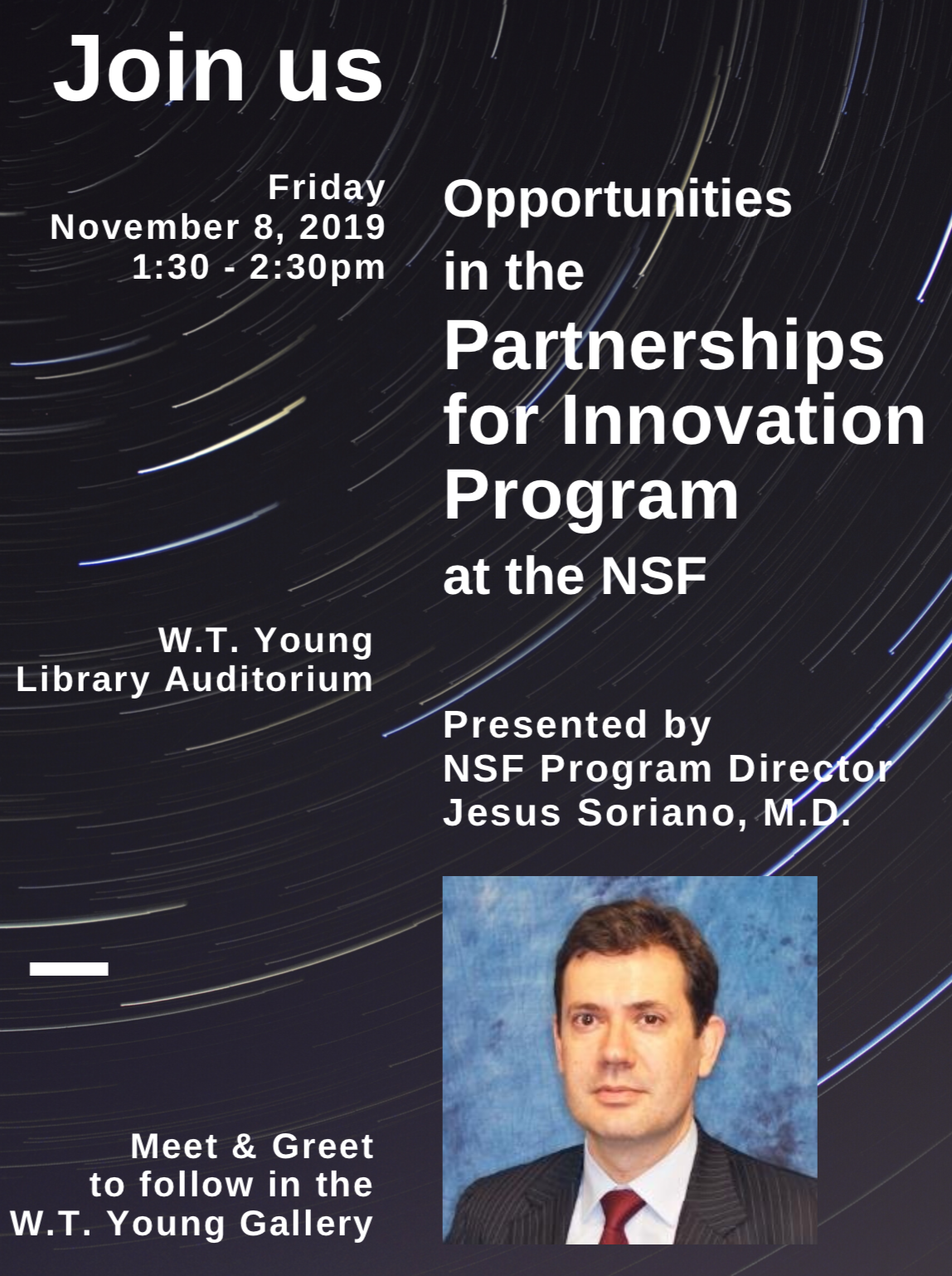William N. Lipscomb Centennial Celebration
During the afternoon of October 24, 2019, the Chemistry Department celebrated the 100th birthday (on December 9) of William Nunn Lipscomb, Jr., who is perhaps our most illustrious graduate. Lipscomb grew up in Lexington, graduated in 1941 from the University of Kentucky with a major in chemistry, and earned his Ph.D.
NSF's Partnerships for Innovation: Seminar on Opportunities
Dr. Jesus Soriana from the National Science Foundation will present an informational seminar on programs available through the Partnerships for Innovation program. From the NSF website: "The Partnerships for Innovation (PFI) Program within the Division of Industrial Innovation and Partnerships (IIP) offers researchers from all disciplines of science and engineering funded by NSF the opportunity to perform translational research and technology development, catalyze partnerships and accelerate the transition of discoveries from the laboratory to the marketplace for societal benefit."
Seminar on Friday, November 8th
Seminar: 1:30pm in the W.T. Young Library Auditorium
Snacks and Meet & Greet: ~2:30-2:55pm in the W.T. Young Gallery
Note: There will be no snacks before the seminar, but there is a Starbucks in the library!
Please contact Susan Odom (susan.odom@uky.edu) if you want more details and/or to request meeting time on November 8th.

